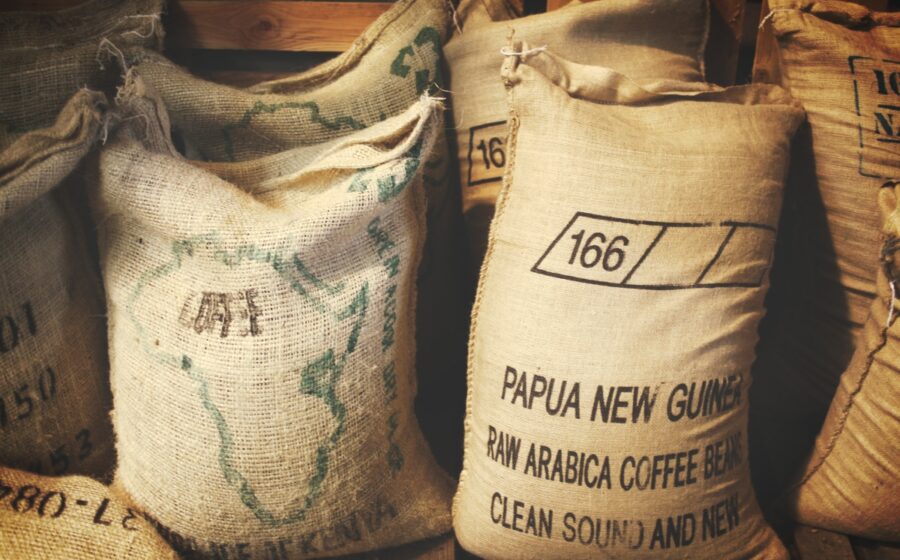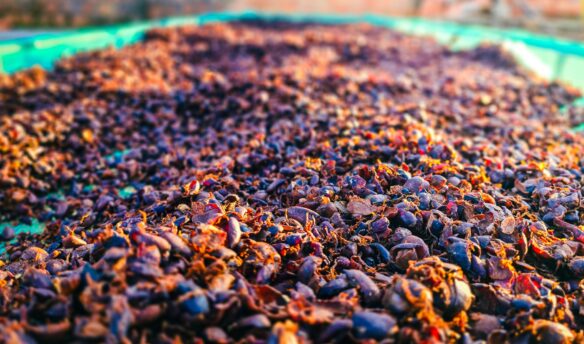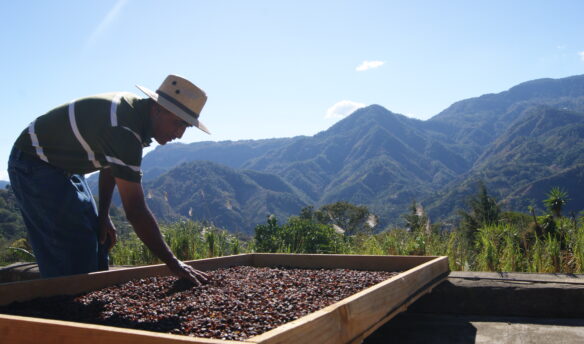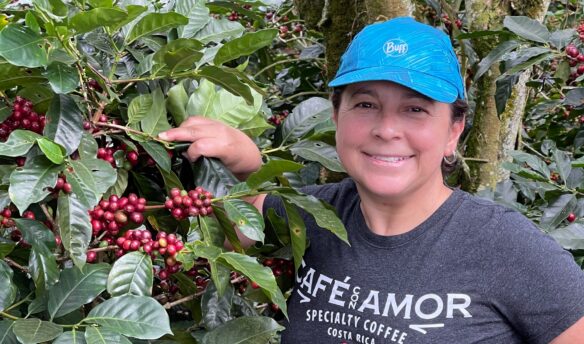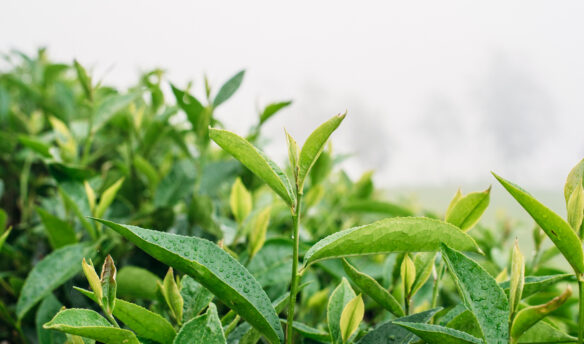As the number of quality-focused, independent specialty roasters grows, we increasingly hear a particular line of thinking: “Now that we’re up and running, we plan to transition from buying spot coffee to booking forward.”
The implication is that spot—green coffee purchased from a warehouse, usually on an as-need basis, rather than “forward,” or weeks or months ahead of when coffee is harvested—is inferior, or it’s small-time, or maybe both. But is that the case? Where does this idea come from, and why do so many people share it?
Recently, we posed these questions to some of our green coffee-selling peers. Their answers pointed to an industry being re-shaped by its newest players—and at a speed outpacing the old definitions.
Is Spot Coffee Low Quality?
“Spot is sometimes associated with low quality or past crop coffee—but that’s just not the case,” says Jen Apodaca, director of roasting at Royal Coffee, a Roasters Guild vice-chair member, and the Coffee Head Judge at the Good Food Awards. “Any good trade house will tell you how long a coffee’s been sitting in their warehouse and when it was harvested. Several exceptional coffees are listed as spot.”
There is enormous value in being able to purchase coffee as you need it, Apodaca continues. “One of the most common mistakes new roasters make is overbuying coffee. All your cash goes into your green, and you have no liquidity,” she explains. “Plus, there’s less of a quality risk when you buy spot—it’s already here, and you can be certain of the flavor profile, unlike a pre-shipment sample not matching your arrival sample. You’ll also save money and space by buying only what you need and shipping it as you need it.”
Over the last decade, green coffee importers have been changing their approaches to spot, especially as they look to attract smaller and more risk-averse clients, says Meister, content specialist at Café Imports.
“Having a robust spot position is good for our customer base, but it’s also risky. It’s a real nail-biter when you’re watching a coffee die on your offering list—demand is very difficult to predict,” Meister says. “But for roasters, spot buying can be exciting and open up a range of products that might be new or new to them.”
Jennifer Roberts, director of trading at Atlas Coffee, says that contracting coffee makes sense for specific coffees in specific markets.
“If you know you need a Sumatra or anything that has a hard-to-sub flavor profile in your blend, you might want to book it out, even if it’s only five bags over the year,” Roberts says. “But I recommend spot for people with new roasting businesses or less predictable usages—or for people who don’t love paperwork! Keeping track of contracts and releases so as not to incur fees can be a real headache.”
According to Roberts, Atlas tries to bring in spot coffees it believes people will love and want to book throughout the year.
“This is a service to our customers. It’s an opportunity for them to try something new without having to commit before it ships,” Roberts says. “We say, ‘It’s here, we tried it, it’s really good.’ It’s like a safe adventure.”
Why Does Spot Coffee Get a Bad Rep?
“Maybe it’s wrapped up in the mystique of being a green buyer,” Roberts says. “Some people have the misconception that buying spot isn’t as legitimate as participating in the purchase process at origin.”
Certainly, whether intentionally or not, marketing has put the finger on the scale in terms of what professional green buying looks like. Instagram doesn’t quite thrive on photos of educated green buyers scoring an excellent spot coffee. The sale of that coffee is critically important to the producers who created it—whether or not the roaster visits to shake their hands and pose for photos.
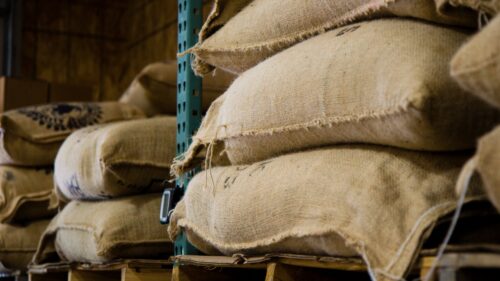
Meister also comments on how “close to the vest” the coffee industry is, especially when it comes to sharing information about green coffee.
“The whole industry could do a better job of making more resources available to buyers so that they understand that buying spot coffee doesn’t have to be like shopping at the grocery store,” Meister says. “As a whole, we can all better define terms and processes to empower buyers to buy however is best for their businesses.”
Teresa von Fuchs, former head of sales and marketing at Genuine Origin, agrees the market hasn’t gone out of its way to be tremendously transparent.
“One of the things we set out to do for roasters, in addition to introducing full transparency to origin, was to redefine the standards of spot coffee,” von Fuchs says. “Rather than treating spot as the leftover dregs, we want to take the risk out of the relationship by offering quality coffees on-demand, at prices that don’t fluctuate with the C-price.”
Is Spot Small-Time?
“This new market has made us constantly re-evaluate our supply chain,” says Brian Speckman, a trader and vice president at InterAmerican Coffee. “It can’t just be story. It’s in the cup. If you’re going to have a lot of spot, this stuff has to speak to compete.”
That’s across the board, agrees Gerra Harrigan, a senior trader at InterAmerican.
“There’s so much more quality in almost everyone’s spot lineup now. That’s from better processing and handling techniques to the use of GrainPro,” Harrigan says, referring to the heavy-duty plastic bags used to ship green coffee and maintain its integrity. “GrainPro has changed the game.”
Spot and its supporters have also forced importers to get much more specific.
“It used to be that coffees with a consistent origin, grade, or quality were interchangeable. Whereas now, people are particular,” Harrigan explains. “That’s forced us to know more about our coffees, and what that’s revealed in our own house is really valuable.”
In other words, big-time changes.
“The job of the import/export house should be to mitigate risk for roasters and producers,” von Fuchs says. “Buying landed coffee, whether you buy only what you need for the week or month or order into the future and secure coffee forward, it’s all about mitigating your risks. Which is a completely valid way to participate in the supply chain.”
InterAmerican’s Speckman points to perhaps the ultimate signifier of a changing industry. “We’re seeing more producers coming here to host cuppings, rather than relying on buyers to travel to origin,” Speckman says. “Spot has changed with the industry’s demand.”
This article was originally published on December 13, 2017 and has been updated to meet Fresh Cup’s current editorial standards.



